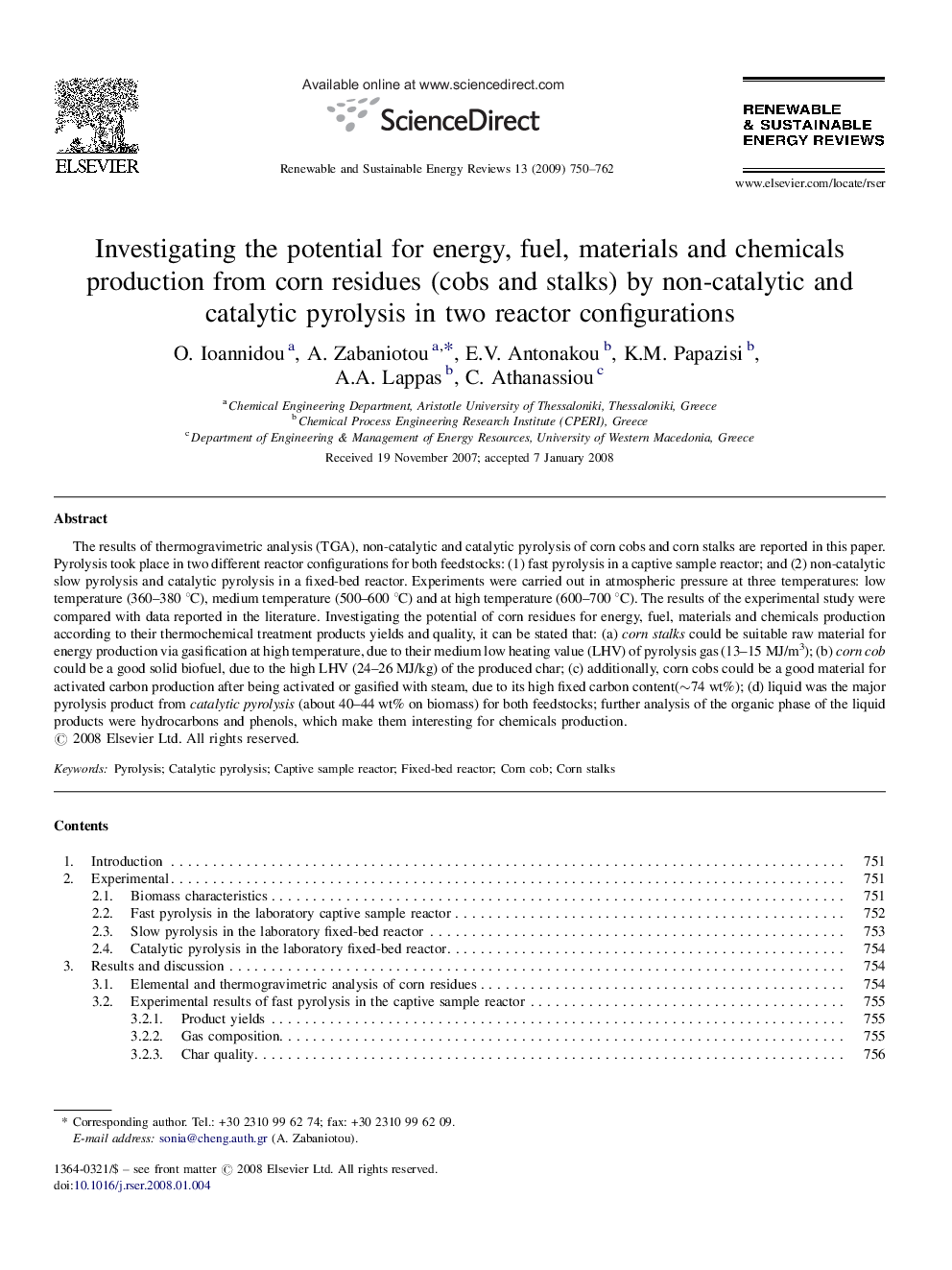| Article ID | Journal | Published Year | Pages | File Type |
|---|---|---|---|---|
| 1752230 | Renewable and Sustainable Energy Reviews | 2009 | 13 Pages |
The results of thermogravimetric analysis (TGA), non-catalytic and catalytic pyrolysis of corn cobs and corn stalks are reported in this paper. Pyrolysis took place in two different reactor configurations for both feedstocks: (1) fast pyrolysis in a captive sample reactor; and (2) non-catalytic slow pyrolysis and catalytic pyrolysis in a fixed-bed reactor. Experiments were carried out in atmospheric pressure at three temperatures: low temperature (360–380 °C), medium temperature (500–600 °C) and at high temperature (600–700 °C). The results of the experimental study were compared with data reported in the literature. Investigating the potential of corn residues for energy, fuel, materials and chemicals production according to their thermochemical treatment products yields and quality, it can be stated that: (a) corn stalks could be suitable raw material for energy production via gasification at high temperature, due to their medium low heating value (LHV) of pyrolysis gas (13–15 MJ/m3); (b) corn cob could be a good solid biofuel, due to the high LHV (24–26 MJ/kg) of the produced char; (c) additionally, corn cobs could be a good material for activated carbon production after being activated or gasified with steam, due to its high fixed carbon content(∼74 wt%); (d) liquid was the major pyrolysis product from catalytic pyrolysis (about 40–44 wt% on biomass) for both feedstocks; further analysis of the organic phase of the liquid products were hydrocarbons and phenols, which make them interesting for chemicals production.
